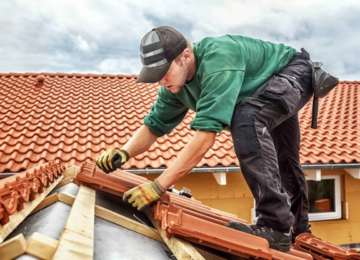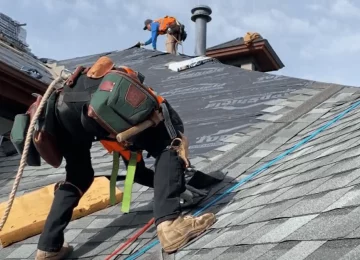A leaking roof is more than just a nuisance—it’s a sign that your home may be vulnerable to serious water damage, mold growth, and costly structural issues. If you’ve spotted water stains on ceilings or walls, missing shingles, or drips during rainstorms, it’s time to consider replacing your roof. In this blog, we’ll break down what you must know before replacing a leaking roof so you can make informed, cost-effective decisions.
1. Understand the Extent of the Damage
Not every leak calls for a full roof replacement. Sometimes, small leaks can be repaired without replacing the entire system. However, if your roof is older (typically 15-25 years, depending on material), has multiple leaks, or shows signs of widespread damage (such as curling shingles, sagging, or mold), replacement is often the safer and more economical long-term option. A professional roof inspection is the first step to understanding whether you need a full replacement or just repairs.
2. Choose the Right Roofing Material
When replacing a leaking roof, you have the opportunity to upgrade your roofing material. Common choices include asphalt shingles, metal roofing, tile, and even energy-efficient options like cool roofs or solar shingles. Consider durability, cost, climate suitability, and aesthetics. Asphalt remains the most popular for its affordability and effectiveness, but metal roofs are gaining popularity for their longevity and energy efficiency.
3. Don’t Ignore Ventilation and Insulation
A quality roof replacement goes beyond shingles. Proper attic ventilation and insulation are critical to prevent moisture buildup and ensure your new roof lasts. Poor ventilation can lead to overheating, ice dams, or condensation damage. Ask your roofer to evaluate your attic as part of the replacement process.
4. Timing Matters
While a leaking roof may feel like an emergency, it’s important to plan the replacement carefully. Roofing is best done in dry, moderate weather. Spring and fall are typically the best times, as extreme heat or cold can affect materials and installation. However, if the leak is severe, emergency repairs or temporary tarping may be necessary before a full replacement.
5. Hire a Trusted Roofing Contractor
Replacing a roof is a major investment—you want to be sure the work is done right. Look for licensed, insured, and well-reviewed roofing contractors with proven experience in your area. A reputable contractor will offer a detailed estimate, explain your options, and provide warranty information for both labor and materials.
6. Understand Costs and Financing
Roof replacement costs can vary significantly depending on size, material, and labor. Get multiple estimates to compare pricing. Many contractors offer financing plans or can help you work with your insurance if your leak resulted from storm damage or other covered events.
Conclusion
Is your roof leaking? Don’t wait until water damage destroys your home’s interior. Contact Florida Roofing and Gutters today for a free inspection and estimate. Our experienced team will guide you through every step of the roof replacement process, so you can protect your home with confidence. Call us now or schedule online to get started!
This post was written by a professional at Florida Roofing and Gutters. https://floridaroofingandgutters.com/ , founded by Tri-Town Construction, is the best roofing company to turn to for residential and commercial roof replacements and repairs in Southwest Florida.










